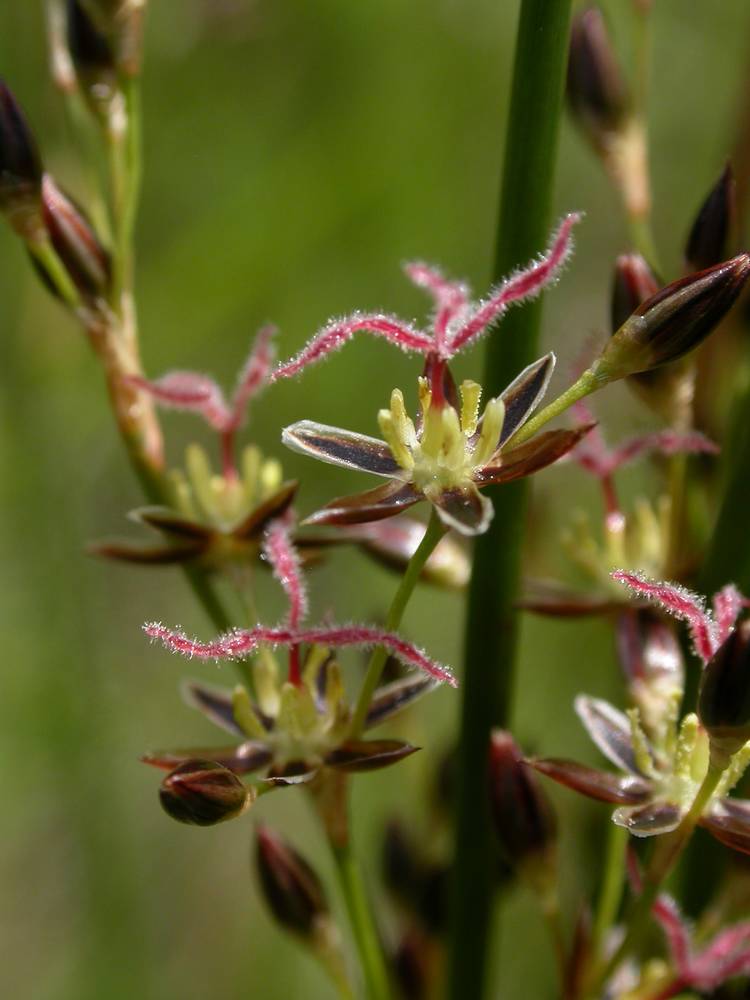Juncus balticus ssp. ater
Baltic rush, dark Baltic rush
lacking blades;
distal sheaths 4–16 cm; pale to dark brown; shiny or dull;
apex usually symmetrical; thin.
more or less diffuse, with 5–45 flowers;
branches obvious, attached well above middle of stem (stems here including erect inflorescence bracts above inflorescence);
inflorescence bracts not swollen at base.
tepals 6, 4–5.5(6) mm, dark brown- or black-striped;
stamens 6;
filaments 0.4–0.7 mm;
anthers 1.2–2.2 mm;
styles 0.7–1.3 mm.
3.5–4.5 mm, usually shorter than or equaling the tepals, brown to dark brown;
apex acute to acuminate, 1-chambered.
0.7–0.9 × 0.35–0.45 mm, apiculate.
Juncus balticus ssp. ater
Shores, dunes, saline marshes, meadows, swales, ditches. 0–3000 m. All ecoregions except CR. CA, NV, ID, WA; east to SD. Native.
A widespread and common taxon across the state, J. balticus ssp. ater never shows the leaf blades characteristic of the otherwise similar J. mexicanus. The division of North American plants into two subspecies is questionable.
Peter Zika
- Local floras:
BC,
CA,
OR,
WA
- Local Web sites:
CalFlora,
CalPhotos,
Flora NW,
PNW Herbaria
WildflowerSearch
iNaturalist (observations)
- LBJ Wildflower Center
- SEINet
- Plants of the World Online
- Encyclopedia of Life
- Wikipedia
- Google Image Search

